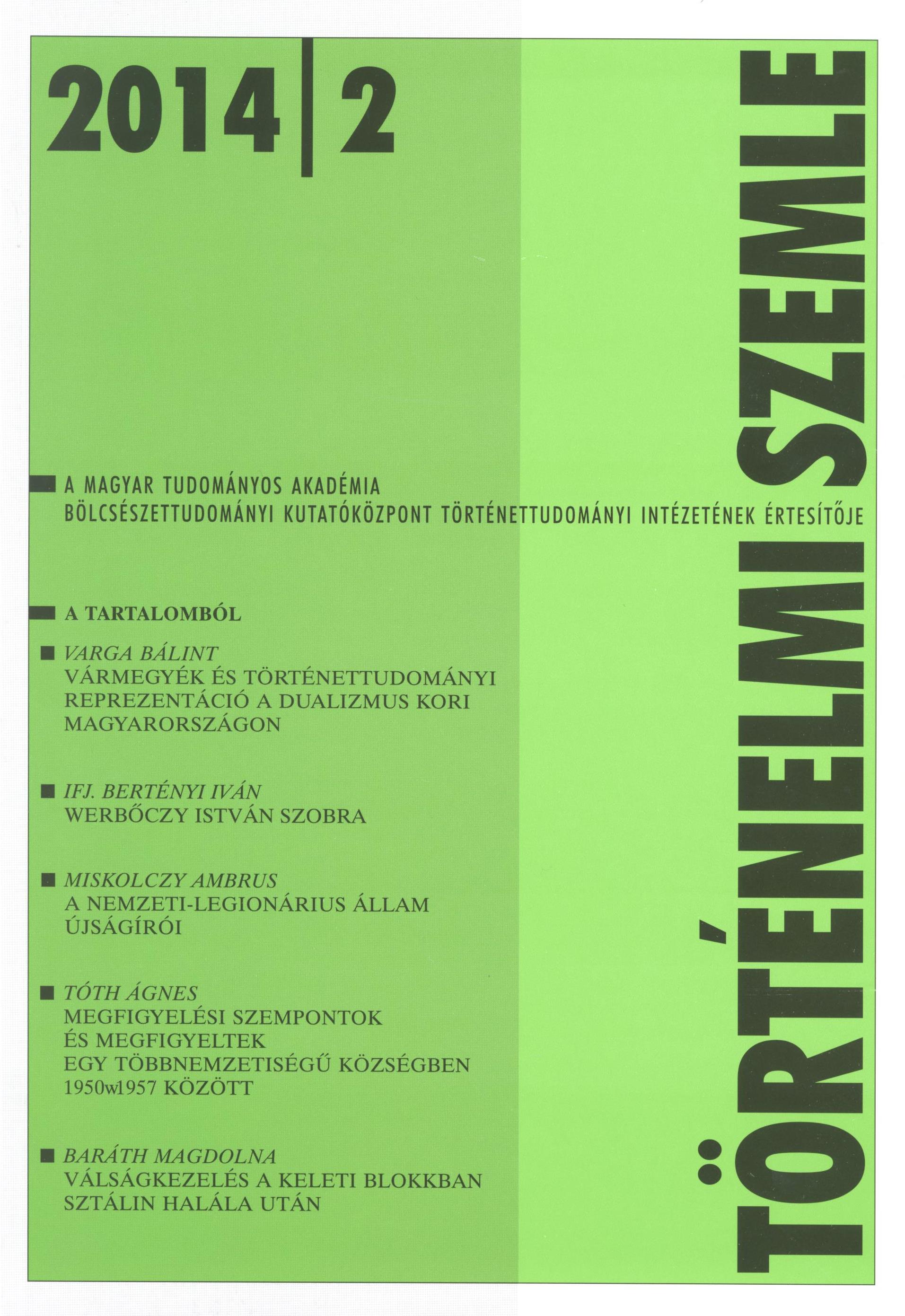Állt 37 évet - Werbőczy István budapesti szobra
There Stood for 37 years István Werbőczy’s Statue in Budapest
Author(s): Iván BertényiSubject(s): Museology & Heritage Studies, Political history, Recent History (1900 till today), 16th Century, 19th Century, History of Communism, Identity of Collectives
Published by: Magyar Tudományos Akadémia Bölcsészettudományi Kutatóközpont Történettudományi Intézet
Keywords: István Werbőczy; statue; Budapest; Hungary; history;
Summary/Abstract: The book “Tripartitum”, which was published in 1517 after the suppression of the revolt led by Dózsa, summarized the rights of the nobles and its writer, István Werbőczy became accordingly a well-known and popular figure among the Hungarian nobility. Although the transformations in 1848 swept away the regime of estates, the authority of Werbőczy as a jurist survived. Consequently it was not surprising that when the emperor Francis Joseph donated ten monuments to Budapest in 1897, the statue of Werbőczy was among them. The study deals with the history of the monument’s erection. The author aims to interpret the circumstances of the emperor’s donation in the wider context of 19th century Hungarian nation-building and tries to explain the inclusion of scholars and artists among the ten Hungarian historical figures. Regarding the problems by the erection of this monument, the rather complicate selection of the site is being dealt with beside the details of the artistic carrier of the sculptor Gyula Donáth. The removal of the statue reveals further interesting facts; namely that it was a group of leftist demonstrators that brought down the monument standing on the Ferenciek tere on the 1st of May 1945. The second part of the study demonstrates that while during the Communist regime in 1919 the statue of Werbőczy was only covered by a red cloth like practically all the other historical monuments, in 1945 it was not only the Communists who cast an evil eye on it. Referring and citing poets like Petőfi or Ady the new, peasantry-centered view of the nation that characterized the populist writers regarded Dózsa as a hero, consequently they promptly rejected the tradition of the bourgeois national idea considering it of noble origin thus casting a long shadow upon the historical memory of Werbőczy. During the much debated turn of 1945 the lines of division between the ideas of the historical past and the concepts of the nascent new Hungary in the field of symbolic politics were partly relocated, partly intensified.
Journal: Történelmi Szemle
- Issue Year: 2014
- Issue No: 02
- Page Range: 203-230
- Page Count: 28
- Language: Hungarian

